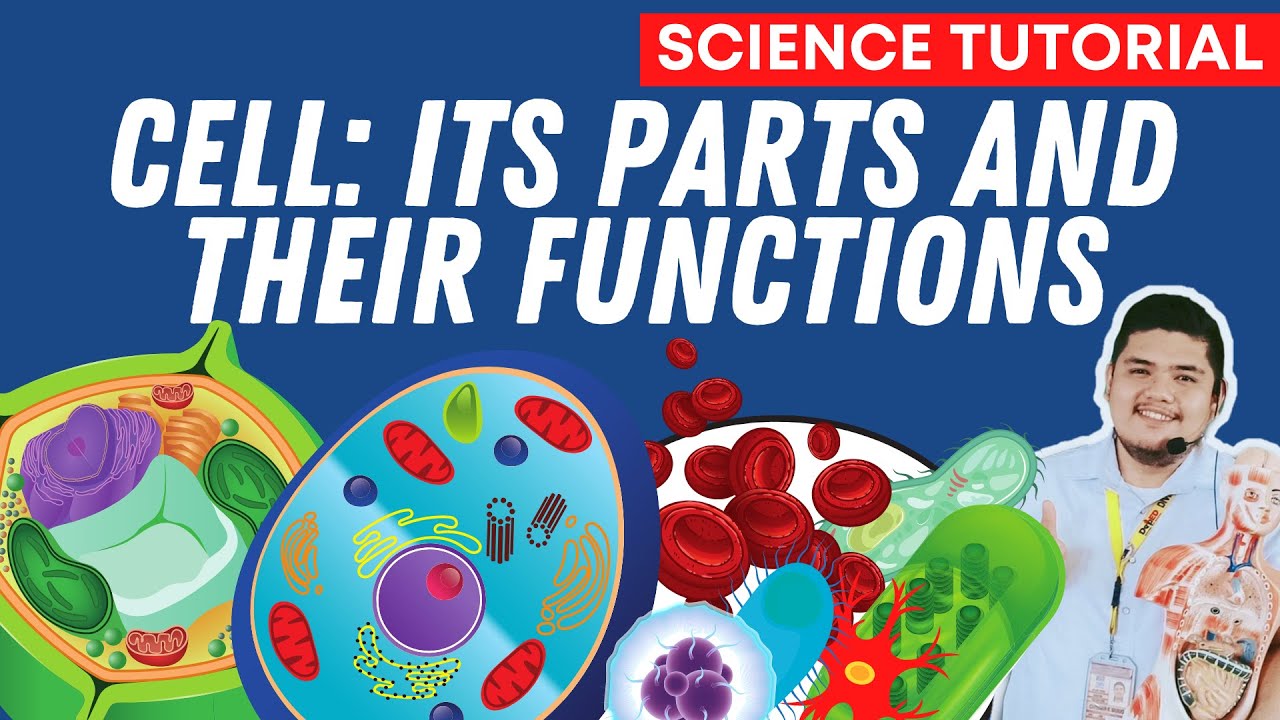Cells (Parts and Functions), Plant and Animal Cell | Grade 7 Science DepEd MELC Quarter 2 Module 4
Summary
TLDRThis educational video script explores the fundamental unit of life, the cell, highlighting its key components and functions. It explains the cell's basic structures including the cell membrane, nucleus, and cytoplasm, and delves into the roles of various organelles like mitochondria, ribosomes, endoplasmic reticulum, and the Golgi apparatus. The script distinguishes between plant and animal cells, noting differences such as the presence of chloroplasts in plants and centrosomes in animals. It also touches on the cell's waste management through lysosomes and the storage function of vacuoles, providing a comprehensive foundation on cellular biology.
Takeaways
- 🔬 The cell is the first and most basic level of biological organization, serving as the fundamental unit of life.
- 👨🔬 Robert Hooke was the first to observe cells as microscopic structures, coining the term 'cell' from the Latin 'cellulae' meaning small rooms.
- 🧬 Cells are composed of organelles, which are tiny structures that perform specific functions, akin to little organs within the cell.
- 🌿 Plant and animal cells share common structures such as the cell membrane, nucleus, and cytoplasm, but they also have distinct differences.
- 🛡️ The cell membrane, or plasma membrane, acts as a protective barrier and regulates the passage of materials into and out of the cell.
- 🧠 The nucleus is often referred to as the 'brain' of the cell, containing DNA and directing cellular activities.
- ⚡️ Mitochondria are known as the 'powerhouses' of the cell, generating energy in the form of ATP.
- 🔠 Ribosomes, containing RNA and proteins, are responsible for protein synthesis within the cell.
- 🚛 The endoplasmic reticulum (ER) comes in two forms: smooth ER involved in lipid synthesis and rough ER involved in protein production and transport.
- 📦 The Golgi apparatus is responsible for modifying, packaging, and transporting proteins and lipids to their destinations.
- 🗑️ Lysosomes contain enzymes that digest waste and worn-out cell parts, acting as the cell's waste disposal system.
Q & A
What is the first level of biological organization discussed in the video?
-The first level of biological organization discussed in the video is the cell.
Who was the first person to observe cells as microscopic structures?
-The British scientist Robert Hooke was the first person to observe cells as microscopic structures.
What does the term 'cell' originate from, and why was it used by Robert Hooke?
-The term 'cell' originates from the Latin word 'cellulae,' which means small rooms. Robert Hooke used the term because the tiny rooms he observed in cork under a microscope resembled small empty rooms.
What are organelles and why are they important?
-Organelles are tiny organs within a cell that perform specific functions. They are important because they are responsible for the various life-sustaining processes within the cell.
What are the three basic structures common to most cells?
-The three basic structures common to most cells are the cell membrane, nucleus, and cytoplasm.
What is the function of the cell membrane?
-The cell membrane, also known as the plasma membrane, encapsulates the cell's contents, protects it from the outside environment, and controls the movement of materials in and out of the cell.
What is the role of the nucleus in a cell?
-The nucleus houses DNA, which carries genetic instructions, and is considered the 'brain' of the cell because it directs all cellular activities.
What is the function of mitochondria within a cell?
-Mitochondria are known as the powerhouse of the cell because they produce adenosine triphosphate (ATP), which is the cell's energy source.
How do ribosomes contribute to protein production in a cell?
-Ribosomes, containing RNA and specific proteins, are directly involved in the manufacture of proteins within the cell.
What is the primary function of the Golgi apparatus?
-The Golgi apparatus is responsible for transporting, modifying, and packaging proteins and lipids into vesicles for delivery to targeted destinations within the cell.
What is the difference between plant and animal cells in terms of vacuoles?
-Plant cells have a large singular vacuole used for storage and maintaining cell shape, while animal cells have many smaller vacuoles.
Why do plant cells have a cell wall and what is its function?
-Plant cells have a cell wall that surrounds the cell membrane, providing structural support and maintaining the cell's shape, allowing the plant to remain strong and stand upright.
What is the role of the centrosome in animal cells?
-The centrosome is a microtubule organizing center in animal cells that plays a role in cell division, particularly in the replication and separation of chromosomes during cell division.
Outlines

This section is available to paid users only. Please upgrade to access this part.
Upgrade NowMindmap

This section is available to paid users only. Please upgrade to access this part.
Upgrade NowKeywords

This section is available to paid users only. Please upgrade to access this part.
Upgrade NowHighlights

This section is available to paid users only. Please upgrade to access this part.
Upgrade NowTranscripts

This section is available to paid users only. Please upgrade to access this part.
Upgrade Now5.0 / 5 (0 votes)





